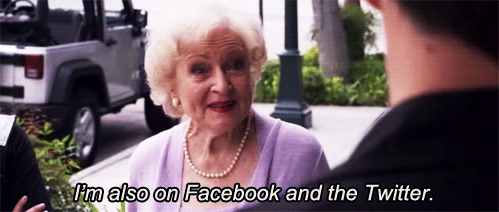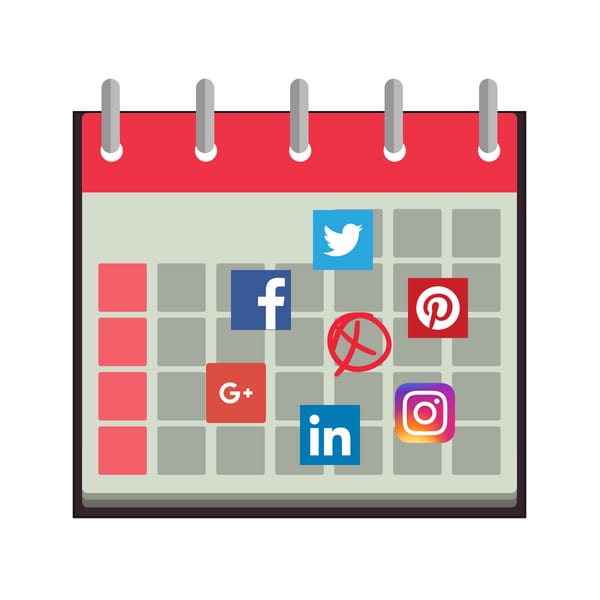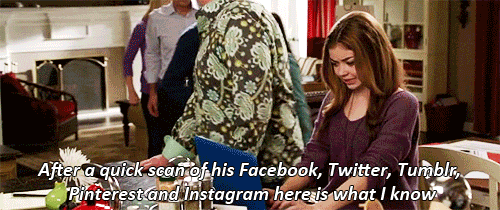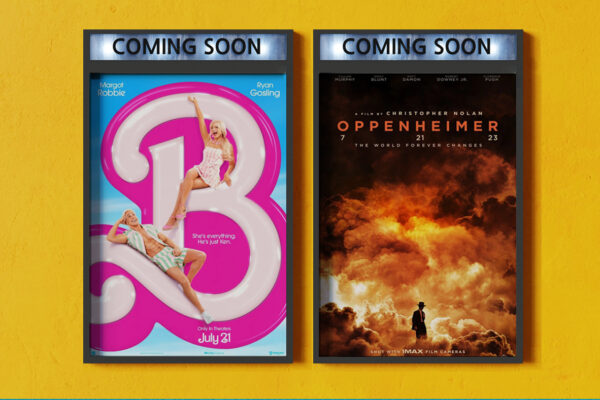Even for experienced PR pros, learning to speak the lingo of social media can be a challenge as new platforms arise (hello, TikTok!) and others reinvent themselves to keep up with emerging trends and changing user preferences. With the world of social media in a state of constant flux, many PR pros and marketers may find it intimidating to create a social media campaign that will speak to their key publics and effectively communicate their brand — especially in the midst of a tongue-tied terrain full of Twitters, Tumblrs, and TikToks.
However, savvy social media marketers know that while platforms and features may change, the basics of a successful social media campaign often remain the same. From A to Z, here are 26 of the most important terms that will help you take your social media campaigns to the next level:
![]()
A is for Audience, because the key to a successful social media campaign is understanding who you are attempting to reach with your posts. Spending time at the beginning of your campaign learning more about your audience — including what types of content they like and the kind of voice to adopt when talking to them — will save you valuable time in the long run and set your social media efforts up for greater success down the line.
B is for Brand, as you always want to make sure yours is on point before beginning any kind of social media campaign. You can write the best posts in the world, but if your organization does not have a clearly visible identity online, the reach of your social media campaign will be extremely limited.
C is for Content, the driving force behind all good social media campaigns. As a social media marketer, you should never be posting to your profiles just to be posting; instead, you need to think strategically about the types of content that will resonate with your audiences — whether it is quirky videos, recipe cards featuring your brand’s products, or helpful articles. Once you discover which pieces of content perform well, it is up to you to use that knowledge to keep your audiences coming back for more.
D for Dialogue, the foundation upon which social media is built. If your brand is talking at potential consumers instead of with them, you are doing it all wrong. The best social media posts attempt to engage audiences by asking questions, inviting comments, and inspiring other forms of active participation. For example, instead of simply telling your Facebook fans to stop into your restaurant for lunch, why not have them vote on which sandwich they are craving most?
E is for Engagement, which is what your social media marketing efforts will be rewarded with if you make quality posts that speak your audience’s language. If your posts are achieving a high reach but low engagement (comments, shares, etc.), it’s time to rethink your approach.
F is for Followers, because without them your social media posts are little more than a lone voice in an empty vacuum. Keep in mind that, no matter the social media platform, the number of followers is not nearly as important as the quality of followers; it is much better to have 100 Facebook fans who actively engage with your content than 10,000 fans who do not care about your Page.
G is for .gifs — no matter how you pronounce the word, .gifs can be a fun, quirky alternative to liven up any post as appropriate. (Just make sure to always check the context of a .gif in question, or your brand may commit a major faux pas.)

H is for Hootsuite, a platform loved by social media marketers everywhere — and with good reason. This incredible tool allows you to draft and schedule social media posts ahead of time, giving you the ability to execute your campaign days, weeks, or even months in advance. Another reason Hootsuite is the gold standard for both casual and experienced pros is the company’s blog, which is a great go-to source for the latest social media tips, trends, and thought leadership.
I is for Insights, a tab on your Facebook Page that is an invaluable ingredient for social media success. The Insights tab allows you to view how your Page is performing on a daily, weekly, or monthly basis, and helps you to easily see how your efforts are stacking up against your competitors. This tab can also help you learn more about the audiences who are engaging with your Page — including their demographics as well as the days and times they are most active on your Page.
J is for Jargon, something you should avoid in your social media posts at all costs. Even for the most technical of businesses, social media is meant to feel like more of an informal cocktail party, not a lecture hall. In fact, most experts agree that your posts should be written at a sixth-grade reading level to ensure that a majority of the people who see your posts are able to clearly understand them.
K is for Klout, a now-defunct “social influence monitoring” platform that some believed would revolutionize social media forever. We’ll never forget you.
L is for Live Broadcasts, which are a great way to engage your Facebook and Instagram followers with dynamic, real-time video content. Intrigued by the idea but unsure of where to start? Check out our guide to going Live and setting the stage for social media success.
M is for Messenger, quickly becoming one of the top destinations for customer service on social media. With more than 1 in 4 consumers now turning to Facebook to ask questions or voice concerns about a business, it is imperative that your brand has a procedure in place for managing your Page’s Messenger.
N is for Notifications, which will help you keep tabs on all of the recent activity on your page. If you’re a social media marketer who manages several Pages, it is definitely worth the effort to take some time and strategically select the notifications you want to receive. (Otherwise, you may find yourself getting more than a little overwhelmed … trust us.)
O is for Organic Reach. In a perfect world, all of our Page’s posts would be seen by all of our followers — but unfortunately, that isn’t the case. Given today’s social media environment in which the typical organic reach of a post on a Facebook Page is just 6%, almost all Pages now have to invest in a paid strategy if they want to drive real results.

P is for Planning, which is exceptionally important when executing social media campaigns. Planning out your content several weeks or a month in advance will help to ensure you have all resources needed (photos, graphics, etc.) for each post, and facilitate a better blend of content from week to week.
Q is for Quora. Did you know that there is a social media platform which is entirely dedicated to helping users ask questions and get answers from trusted experts? (And did you know that it’s even more difficult to find another social media term that starts with the letter “Q”?)
R is for Return on Investment (ROI), an important metric that proves your social media efforts are driving real business results. If your social media marketing tactics are resulting in a poor ROI, it is time to take a step back and change your social strategy.
S is for Sharing; because sharing posts from other Pages and retweeting content from other accounts helps to build the sense of community that is at the foundation of social media. Especially for new accounts, sharing posts — and having other Pages share your own posts in return — is a great way to build an initial following and attract attention to your profiles.
T is for Trends, which are important to remain informed about for any social media marketer. Whether it’s trying out new techniques for sharing on Instagram Stories or learning about the latest changes to Facebook’s ad platform, social media managers who fail to stay current will likely see their campaigns fall behind.
U is for URL Shorteners like Bit.ly, Ow.ly, and TinyURL. Although it requires a little extra effort, properly utilizing tracked links and URL shorteners will go a long way toward proving the ROI of your social media efforts and demonstrate the value of social in an organization’s overall marketing efforts.
V is for “Vanity Metrics” — the social media metrics that are easy to measure but often don’t matter. For example, likes, pages views, and e-newsletter subscribers will not have any impact unless the people taking those actions are also engaging with your business in other ways, such as purchasing a product or attending an event.
W is for Wendy’s because, yeah, even though everyone is talking about them, the brand has had some pretty epic burns (and other memorable customer interactions) on Twitter. Although this kind of approach is certainly not appropriate for all brands, thinking about the disruptive ways in which Wendy’s approaches their social media presence is a great lesson for any marketer.
X is for Xanga, another (mostly) defunct social networking platform that laid the foundation for the Facebooks and Twitters of today. Although its heyday may have passed, Xanga’s impact will forever be felt in our hearts.
Y is for Yelp, a social networking site built on local reviews. Although Yelp is not an appropriate social media platform for all businesses, having a presence on it can be an invaluable way for new restaurants and services to attract new audiences and generate word-of-mouth.
Z is for “Zzz …” — because after spending the time and energy required to create an effective social media campaign, you’ve earned some well-deserved rest. Even if social media doesn’t truly ever sleep.

Now that you know your social media ABCs, next time you’ll be able to create a social media marketing campaign that truly sings.
Scooter Media is Your Social Media Resource
Scooter Media is your resource for navigating the ins and outs of the always-changing world of social media. Looking for more social media tips? Check out our primer on Social Media Trends in 2019, along with guides to scheduling your social media posts and understanding the basics of social media analytics.
About Scooter Media
Scooter Media is a full-service communications agency in Greater Cincinnati specializing in public relations and social media.


